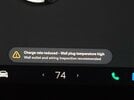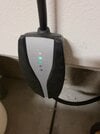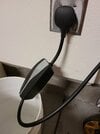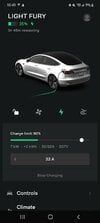Jeffro37
Member
I had this happen once a few months ago. It didn’t seem warm, and didn’t occur again so I assumed it was due to heat in the garage.
Happened again this evening. I didn’t get a notification when the car dropped the charge rate down, so didn’t check it right away. But I stopped it when I saw it was down at 16A and unplugged it. The mobile charger was warm to the touch, but not hot. The outlet felt fine. I took it apart to see if there was any writing issue in the 14-50, but it seemed fine. None of the wires felt warm, connections looked solid, no sign of melting.
Is it likely it actually did get warm, but cooled enough at the lower amperage that I didn’t notice anything? I would have expected to see something strange when I opened it up.
I guess an electrician makes the most sense, but I can’t help but wonder if it’s a prob with the mobile charger.
Happened again this evening. I didn’t get a notification when the car dropped the charge rate down, so didn’t check it right away. But I stopped it when I saw it was down at 16A and unplugged it. The mobile charger was warm to the touch, but not hot. The outlet felt fine. I took it apart to see if there was any writing issue in the 14-50, but it seemed fine. None of the wires felt warm, connections looked solid, no sign of melting.
Is it likely it actually did get warm, but cooled enough at the lower amperage that I didn’t notice anything? I would have expected to see something strange when I opened it up.
I guess an electrician makes the most sense, but I can’t help but wonder if it’s a prob with the mobile charger.







